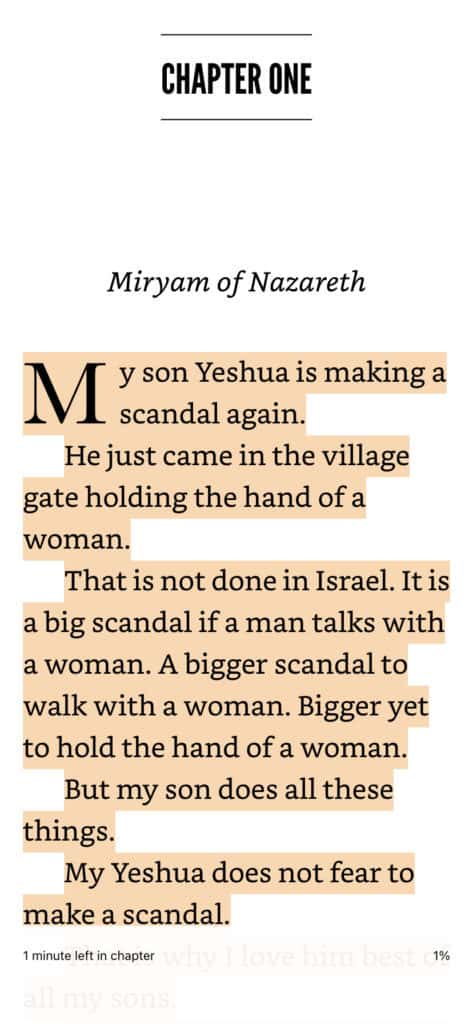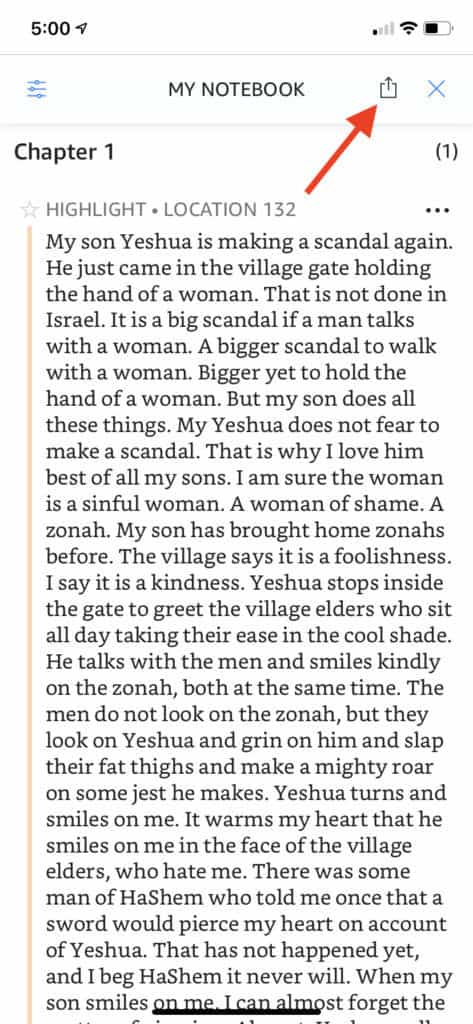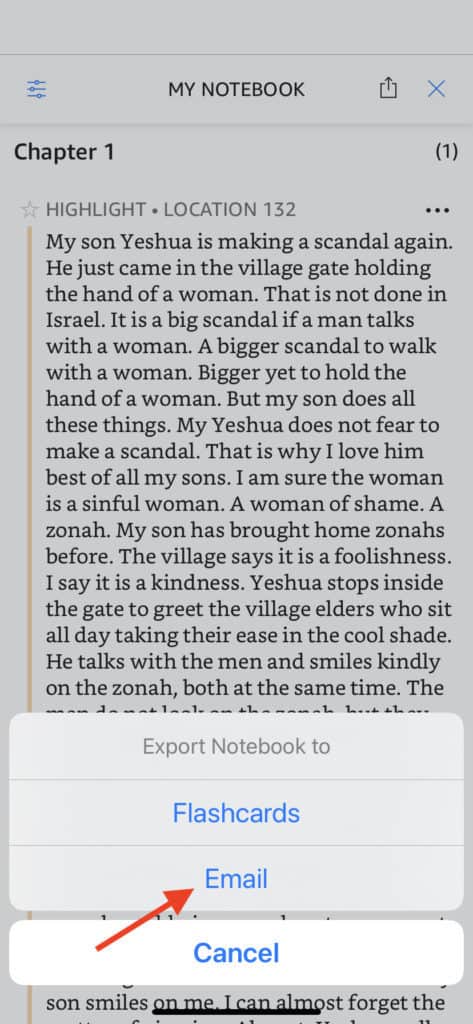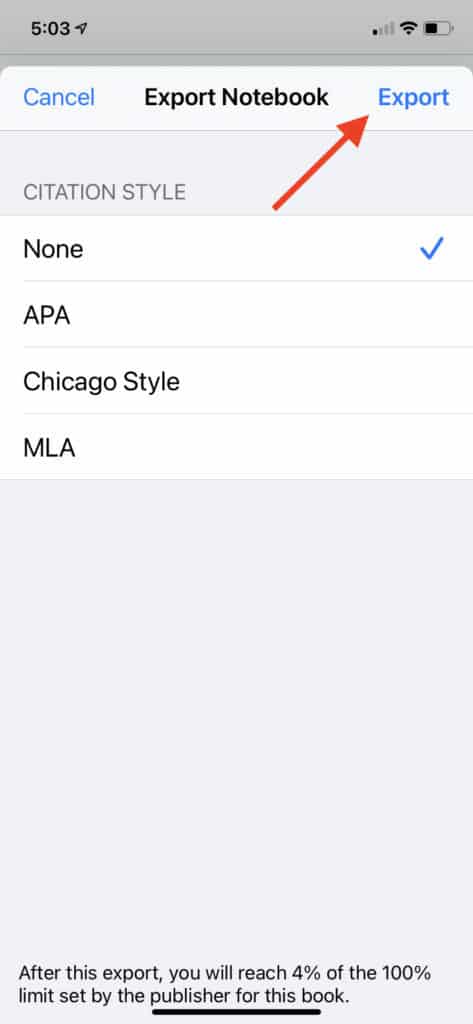If you read a lot of e-books, you may find yourself wishing you could highlight interesting segments in your e-book reader and transfer them to your computer.
You can! At least, you can on the e-book readers I’ve tried.
I do most of my reading on the Kindle app on my iPhone, so I’ll show the process I use. If you use a different app or a different device, the exact steps may be somewhat different. You’ll need to experiment to figure out how to do it on your system.
But if you do a lot of research, this is a process that will save you boatloads of time, so it’s well worth figuring out.
Step 1: Highlight the Section You Want to Capture
On the iPhone Kindle app, you can highlight anything by selecting it with your finger on the screen.
The image below shows a screen capture of the entire first page of my novel Son of Mary, with more than four paragraphs highlighted.
Step 2: Open the Notes Section in Your Kindle App
On the iPhone Kindle app, whenever you touch the screen in a non-highlighted area, a toolbar appears at the top of the screen, and one of the icons in that toolbar is the Notes icon.
The image below shows a screen capture of the first page of my novel after I touched a blank spot on the screen. I have drawn in a red arrow to point to the Notes icon in the top toolbar.
When you touch that Notes icon, the Notes Section of the app appears on the screen.
Step 3: Click the Share Icon in the Toolbar
On the iPhone Kindle app, each Note you’ve highlighted shows up with a small header that tells the location the Note came from. You can scroll through the Notes Section and see every snippet that you’ve highlighted all through the book.
Notice that the paragraphs have been all smushed together from the segment I highlighted in my book. You can undo this later, after you’ve emailed yourself the Notes.
The Notes Section has a toolbar on top. There is a Share Icon in this toolbar.
The image below shows a screen capture of the Notes Section. I’ve drawn in a red arrow that points to the Share Icon.
When you touch the Share Icon, a dialog box appears at the bottom of the screen that gives you the choice of exporting your Notes to Flashcards or Email.
Step 4: Choose Your Export Option
Assuming you want to e-mail your Notes to yourself, choose the Email option on the dialog box.
The image below shows a screen capture showing the dialog box at the bottom of the screen. I’ve drawn in a red arrow that points to the Email button in the dialog.
When you select the Email option, an Export Notebook page pops up that lets you choose how you’ll format the citation of your Notes.
Step 5: Choose your Citation Option and Export Your Notes
Choose whichever citation style you like best. The default style is None.
Once you’ve chosen the citation style, click the Export button in the upper right corner of the Export Notebook page.
The image below shows a screen capture of the Export Notebook page. I’ve drawn in a red arrow that points to the Export button.
You’ll notice at the bottom of the screen there’s a line of text that tells you how much of the book you have exported as Notes, including the Notes you’re about to export. The publisher of each book sets a limit on the amount of text you can export as Notes. The Kindle app won’t let you export more than that.
Once you’ve clicked the Export button, the e-mail app on your phone will pop up, ready to e-mail yourself an attachment with your Notes. All you have to do is enter the email address you want to send the Notes to, and then send the e-mail.
Step 6: Go to E-mail and Open the Attachment
Your phone has now sent you an e-mail with your notes. Go to your e-mail account on your computer and find the e-mail. There will be an attachment file in the e-mail with a name that ends in “.html”.
On my machine, I found the best way to open this attachment was to right-click the attachment and select “Open With…” from the menu. This pops up a subment with a number of applications. I chose Microsoft Word, and this opened up the attachment nicely in Word.
Step 7: Reformat Your Notes
As we saw earlier, the paragraphs in your Notes are all smushed together. You may need to do some reformatting to make the Notes look nice.
Do whatever reformatting you need to do.
That’s all!
Your e-book reader and your computer system may be different from mine, so the steps you take may be a bit different. But the process above should inspire you to figure out the exact set of steps to transfer notes from your e-book reader to your computer. If you run into problems, you may need to use a search engine to find exactly how to do the job on your e-reader and your computer.
Have fun!




That’s going to be really useful for editing when I get to the ‘read on kindle’ stage. Thanks
I appreciate this tip greatly. I’m constantly typing quotes from books. This will make it so much easier.
I purchased Son of Mary not too long ago. As soon as I read it, will post a review on Goodreads. Unfortunately, Amazon won’t allow my reviews because I use Amazon gift cards to purchase on that site mostly.